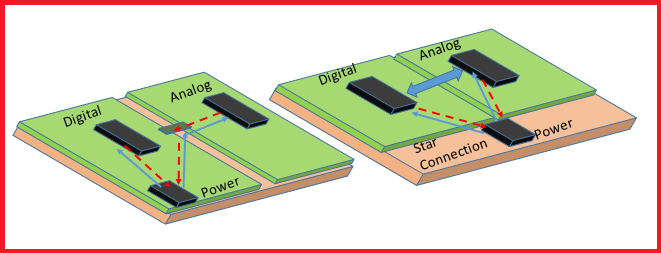Something is going to need to be burned into your brain before we get started with the topic for today. No matter where the current moves, it will always find its way back to its origin; there are no exceptions to this rule. In this method, the traces that convey current always include a current loop or return path electrical circuit. Therefore, it makes no difference to the current whether or not you supply that return path. It will have a life of its own. If you don’t, it’ll screw up your entire circuit as it tries to find its way back.
What does a current return route consist of?
The path that currently takes as it travels back to its origin is known as the “return path,” which is synonymous with the “path it follows.” Are you familiar with the concept of an electrical circuit? It refers to the path that electrons take as they go from a source of voltage or current to their destination. The location at which electrons initially enter the circuit is referred to as the “source” of these particles. The part of an electrical circuit where electrons are allowed to exit is referred to as the “return” or the “ground.” When an electron completes its journey through its circuit, we refer to the point where it leaves the circuit as the “return” since it always leads back to the source.
What is the purpose of the current continuation?
Since charges and energies must be conserved, so does the current. Imagine that the electric current does not go back to its origin. After that, what? Even so, the charge will continue to accumulate elsewhere. Some locations could have an abundance of positive charge, while other locations would have an abundance of negative charge. This disruption would result in potential differences, which would, in turn, force the current to flow in the other direction. It is desirable, but not required, for there to be no net movement of charge in or out of any node or component in a circuit. This means that, in every circuit, the current must eventually return to its origin.
It seems to reason that a current that travels in a closed loop and then returned to its source will follow the same path it took to its destination. To answer your question, how long does the whole procedure take? At what point are you able to observe the current emerging from the return path? Does it take a second and a half? Or, drop for a second and then return immediately? Let’s pretend that the signal as well as return cables are separated by some sort of dielectric. Other than through the terminal at the far end, there is no other way for the current to get from the signal conductor to the return conductor.
Let’s begin by considering the fundamental concept. The path that the current takes through the circuit is going to be represented by a collection of very small capacitors. The first current to flow into the line is described here. When the signal first begins, the capacitor is brought to its attention. During this period of transition, the voltage will fluctuate as the edge moves past, and the original capacitor will have current flow through it. When you send off a signal, it doesn’t care how you’ve planned its path; it just needs to get where it’s going. The back-and-forth movement of the current is determined by the nearby surroundings as well as the portion of the line that is experiencing a change in voltage, often known as the location of the signal edge.
A loop is created when the source current enters the conductor and then travels through the capacitor that is located between the signal path and the return path. Along with the voltage transition edge, the current loop will also propagate across the transmission line as it moves through the line. As long as the signal voltage is changing, we may expand the transmission line model to encompass the remaining signal and return pathways, complete with any distributed capacitors between them.
If the current loop is broken, the signal will be distorted and the regulated impedance will be compromised.
Why is it so important to have a current return path?
The technological design of yesteryear was thoughtful, to a certain extent. Even with rather shoddy schematics and a less-than-optimal layout, it is still possible to construct meaningful and working circuit boards. However, because of the ongoing competition to reduce the size of printed circuit boards (PCBs) and chips, operating voltages and noise margins are being lowered. Because of the downsizing, the engineers will now need to make more considered decisions on the designs they create.

